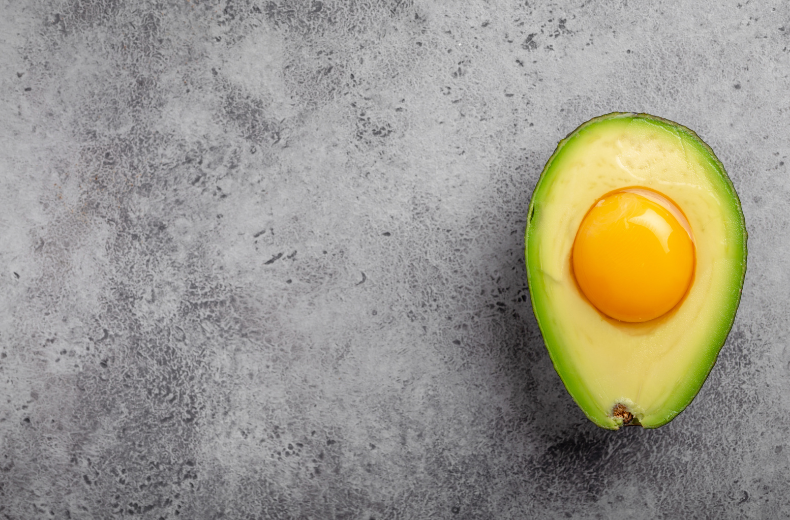AUTOPHAGY - WHAT IS IT?

Carmelita Claus
Content Manager
5 minutes
April 8, 2022

There are regenerative processes in every organism that form the basis for maintaining health and preventing disease. One of these is autophagy, a natural method of ridding the body of damaged or dead cell parts. The detoxification process known as autophagocytosis involves the controlled breakdown of molecules and intracellular cellular organelles in the human body. Autophagy occurs in both healthy and pathological cells. This mechanism is activated to obtain an additional source of energy.
What is autophagy?

Every living cell has a finite lifespan, which can end under physiological conditions in two ways - apoptosis or autophagy. In the first case, it involves a programmed dying resulting from damage to its DNA, and this takes place under the strict control of proteins and genes. In contrast, the process of autophagy usually carries the cell through adverse living conditions. Nevertheless, if left in a difficult physiological state for too long, it ends up dividing into smaller fragments, which are eventually eliminated by the immune system.
Autophagy was discovered by Christian de Duve and researchers at Rockefeller University. It was not studied in detail until Professor Yoshinori Ohsumi, who was awarded the Nobel Prize in Medicine and Physiology in 2016. Under the term autophagy there are several processes. First of all, it plays an important role in the process of tumorigenesis - on the one hand, preventing neoplastic transformation of cells, and on the other hand, providing the ability to adapt to unfavorable conditions, including nutrient deficiencies.

Types of autophagy
Macroautophagy consists in the formation of an autophagosome produced from a fragment of the cell cytoplasm and its degradation in lysosomes. During this process, induction and fusion with the digestive vesicle occurs. The autophagosome then surrounds the cytoplasmic fragment and fuses with the lysosome. The final step is the formation of the autophagolysosome, a structure capable of digesting the encapsulated contents with damaged cellular organelles.
Microautophagy is the second type of autophagy, which belongs to direct processes. At this stage, the phenomenon of absorption of a large number of protein complexes is used. This process does not require the formation of a membrane around the organelle. Most of the damaged elements destined for degradation are delivered to lysosomes without the help of autophagosome. Thus, it is the mechanism of autophagy that resembles the process of endocytosis - the membrane of the lysosome is trapped inside and degraded.
Chaperone-dependent autophagy is a self-digestion process that destroys only selected proteins. Usually the stimulus would be oxygen stress. As for chaperone-dependent autophagy, it recognizes KFERQ sequences, i.e. lysine-phenylalanine-glutamic acid-arginine-glutamine. Besides, it requires the presence of LAMP-2a receptor from the lysosome.
Autophagy - areas of action
Cleansing cells from foreign bodies and toxins is particularly important for maintaining health and preventing many diseases. In the process of autophagy not only damaged components such as proteins or organelles are broken down, but also viruses or bacteria. Research conducted by a team of scientists from the University of Michigan, indicates that autophagosome is a helper of the immune system. As far as autophagy is concerned, it shows a protective effect against intestinal pathogens, group A streptococci or mycobacteria.
Many factors influence the state of the body's functioning. Poor condition may be the result of nutrient deficiency, stress, or viral or bacterial infections. In this case, autophagy provides a second line of defense against dangerous microorganisms and viruses. The biological catabolic process called autophagocytosis can lead to advances in cancer therapy, neurogenerative diseases, and reduction of inflammatory processes.
Supporting the body in the recovery process
Autophagy has a bidirectional effect. It can activate the body to fight against pathogens and reduce inflammation by removing antigens from cells, making it possible to fight various infectious diseases or microbes.
Neurological diseases
Autophagy removes abnormal proteins, thus protecting against neurodegeneration in Huntington's, Alzheimer's or Parkinson's disease.
Cancer diseases
Autophagy not only inhibits chronic inflammation, but also prevents excessive DNA damage. In some cancers, it enhances the growth of the lesioned cells. Afterwards, it may play a key role in inhibiting some tumorigenesis processes.
Support during aging
Damaged cells usually appear as we age. Proper autophagy activity increases metabolic efficiency. The processes involved involve the removal of dysfunctional mitochondria.
Stimulation of autophagy - how to stimulate the body to self-cleaning
Activating this mechanism promotes the preservation or restoration of proper functioning of the body. This, in turn, translates into our health. Increased autophagy can be observed during caloric restriction, i.e. reduced supply of calories, proteins and fats and during regular physical exercise. The process of cell recycling is favored by conducting a fruit and vegetable diet. This, in turn, acts as an aid in the treatment of hypertension and neurological diseases. Besides, it can also reduce inflammation of joints or bones.
Substances activating autophagy include: green tea, curcumin, nicotinamide and spermidine, which is found in male seminal fluid and foods such as wheat germ, soy and shitake mushrooms. A ketogenic diet based on eating fewer carbohydrates can also help regenerate cells. Aerobic exercises that induce autophagy in muscle tissues are also useful. An appropriate daily rhythm, including time for regeneration and sleep, has a positive effect on its stimulation.
Autophagy - everything you need to know
In the process of autophagocytosis, the breakdown of a damaged cell promotes regeneration. Autophagy is one of the ways to support detoxification, that is, to get rid of harmful substances from the body. This is extremely important, especially for people who are struggling with viral or bacterial infections. The process of autophagy happens to support proper cell function and maintain optimal health.
You might also be interested in these

8 minutes
The liver is particularly important for maintaining normal blood glucose levels. It is where excess glucose is stored, in the form of glycogen, among other things.

Carmelita Claus
Content Manager

8 minutes
IF diet is becoming more and more popular. It raises many controversies among dietetic experts.

COOPER MOHR
Content Manager

6 minutes
What physiological activity takes up the biggest part of our lives? Sleep, of course

Carmelita Claus
Content Manager
.svg)





